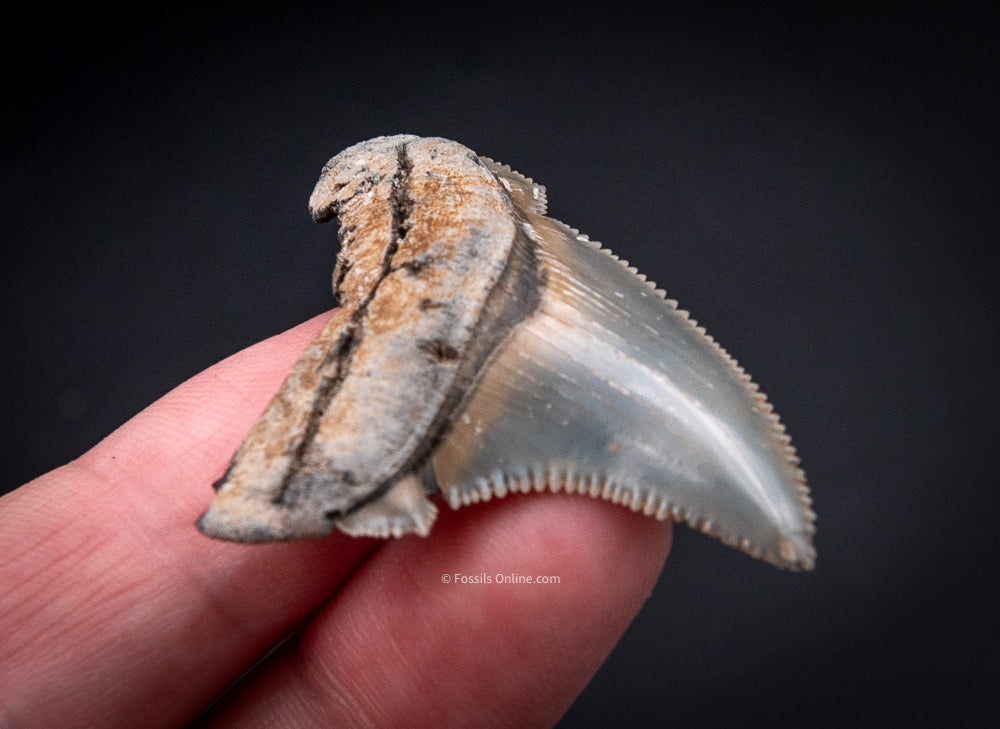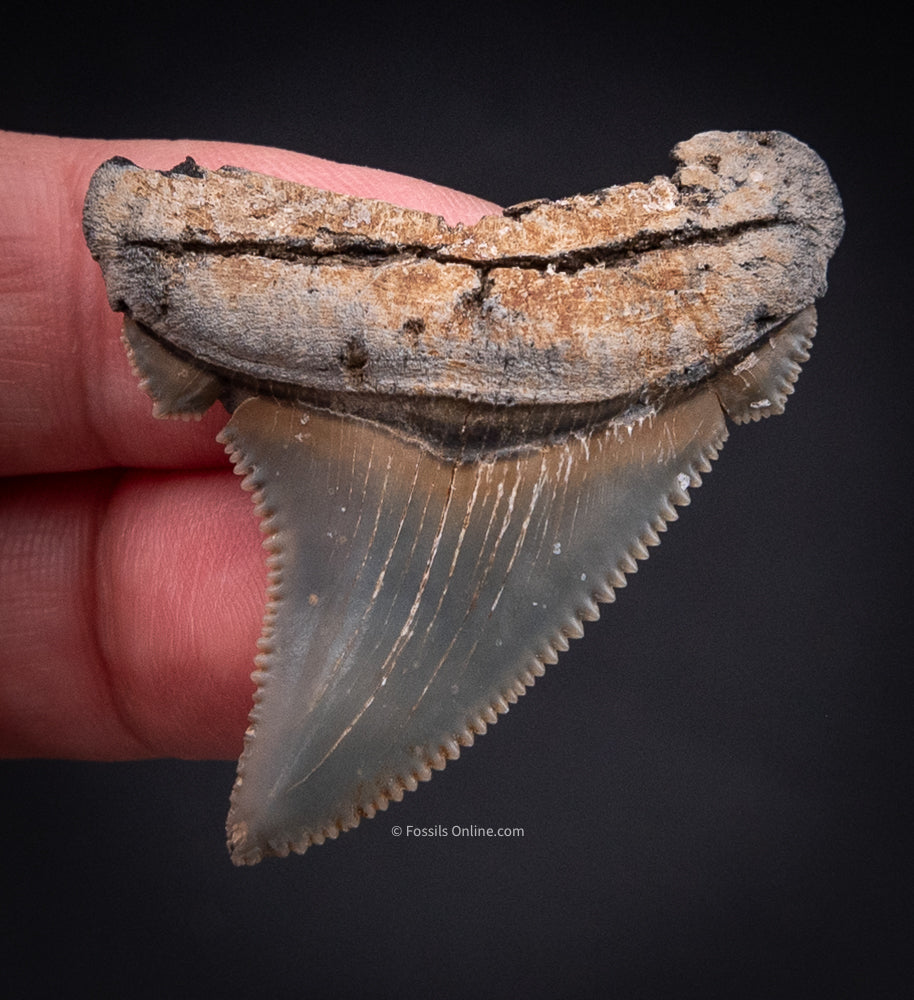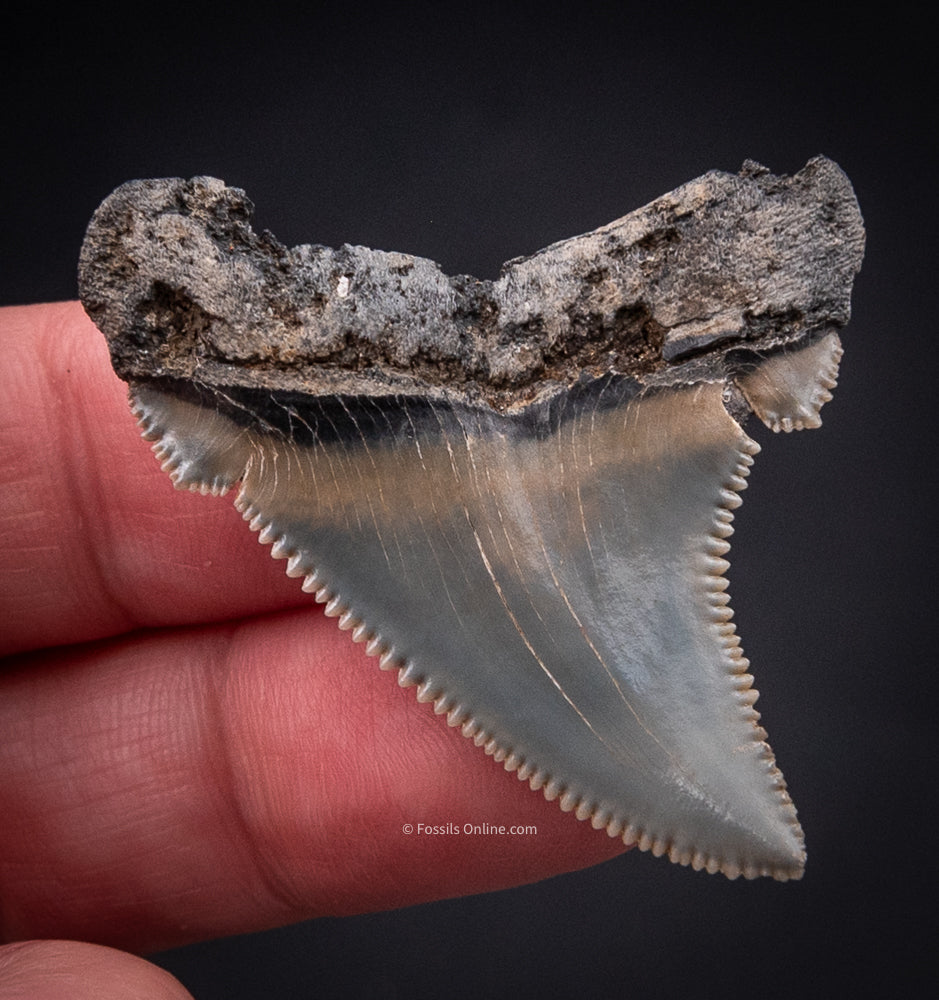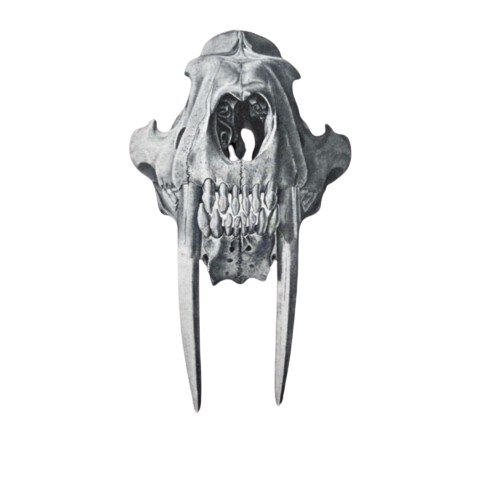


SC Angustidens 1.79"
The Angustidens , scientifically known as Carcharocles angustidens, thrived during the Oligocene epoch, a geological period extending from about 34 to 23 million years ago. This epoch was a time of significant climatic changes and saw the diversification of many mammal species.
-
Habitat: These animals had a widespread distribution, with fossil evidence, especially their teeth, discovered in various parts of the world. Notably, in the Southeastern United States, particularly in the rivers of South Carolina, their fossilized teeth are frequently found, suggesting that these sharks inhabited coastal and shelf waters extensively.
-
Teeth and Physical Description: The most defining characteristic of the Angustidens is its large, serrated teeth, which could exceed 4 inches in length. These teeth were broad, triangular, and adept at slicing through flesh and bone, indicating the shark's predatory nature. The impressive size and structure of these teeth make them a coveted item among fossil collectors.
-
Diet and Ecological Role: As a top predator in its marine ecosystem, Carcharocles angustidens likely preyed upon a variety of organisms, including marine mammals, large fish, and other sharks. Its formidable teeth were perfectly adapted for this role, allowing it to efficiently consume a diverse range of prey.
Species
Otodus angustidens
AGE
Oligocene
LOCATION
South Carolina
Size
1.79"
Choose options



